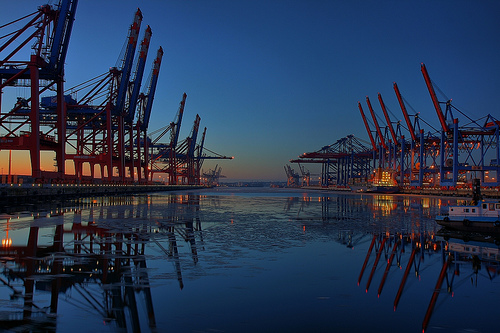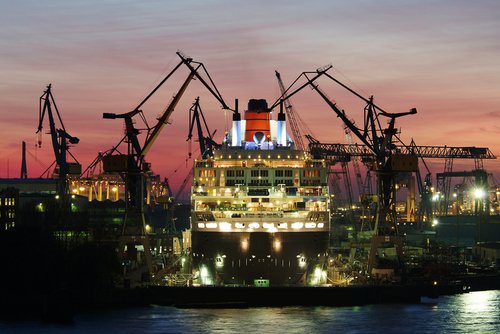The harbour covers an area of 73.99 km² (64.80 km² usable), of which 43.31 km² (34.12 km²) are land areas. The location is naturally advantaged by a branching Elbe, creating an ideal place for a port complex with warehousing and transshipment facilities. The extensive free port also enables toll-free shipping.
The history of the port is almost as old as the history of Hamburg herself. Founded on May 7, 1189 by Frederick I for its strategic location, it has been Central Europe's main port for centuries and enabled Hamburg to develop early into a leading city of trade and a rich and proud bourgeoisie.
During the age of the Hanseatic League in the 13th to 17th century, Hamburg was considered second only to port and city of Lübeck, in terms of its position as a central trading node for sea-borne trade.
The Speicherstadt, one of Hamburg's architectural icons today, is a large wharf area of 350.000 m² floor area on the northern shore of the river built in the 1880s as part of the free port and to cope with the growing amounts of stored goods in the port.
Hamburg shipyards lost fleets twice after WWI and WWII and after the division of Germany between 1945 to 1990, the Port of Hamburg lost most of its hinterland and consequently many of its trading connections. However, since German reunification, the fall of the Iron curtain and European enlargement, Hamburg is substantially making ground as one of Europe's prime logistic centers and as one of the world's busiest and largest sea ports.
The celebration of the harbour's birthday (Hafengeburstag) every year during the first weekend of May is one of Hamburg's biggest public events. Visitors come from all over Germany and Europe to experience the festivities. Tugboats perform "ballets", old galleons and new cruise ships are open for tours, and fireworks explode at night.
Deepening of the river Elbe for large vessels is controversial for ecological reasons. In part due to cooperation with Lower Saxony and Bremen to build a new container port (JadeWeserPort) in the deep waters of Jadebusen in Wilhelmshaven, Hamburg withdrew from this plan after a change of government in 2001.



No comments:
Post a Comment